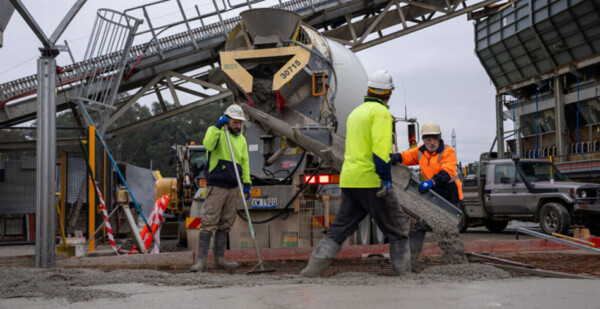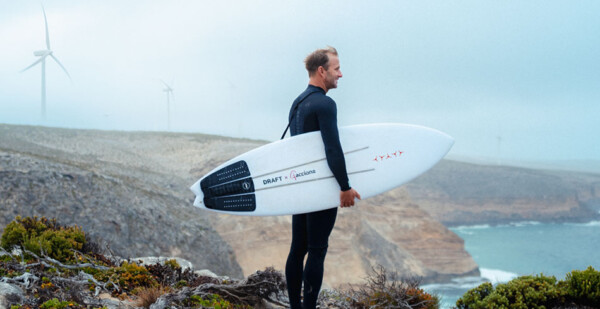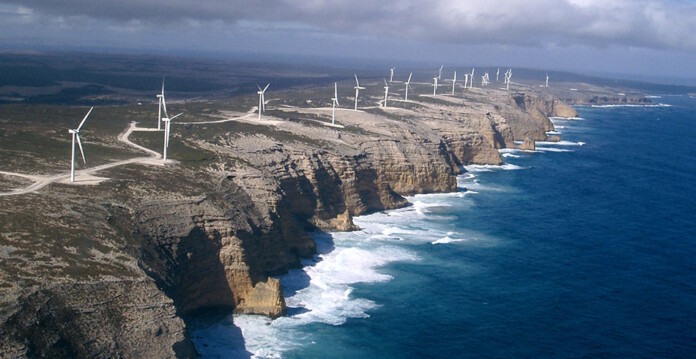Renewable energy technologies are essential for Australia’s energy transition, but how do we deal with the waste from decommissioned large-scale renewables and rooftop solar panels that have reached their end of life? Energy Source & Distribution explores some of the solutions being developed.
Solar
With one in three homes now having rooftop solar systems installed, Australia is now facing the issue of how to deal with end-of-life (EOL) solar panels.
Photovoltaic solar panels consist of 95% recyclable materials, including aluminium, glass, silicon, silver, copper, indium, and germanium. Currently, only 17% of solar panel components—the aluminium frame and junction box—are recyclable in Australia, with the remaining 83%—including glass, silicon, and polymer back sheeting—treated as waste.
While some have called this a “looming crisis”, solar cell technologist Professor Andrew Blakers—co-inventer of the PERC solar cell—said solar panel waste has straightforward, everyday solutions.
“For perspective, when the world is fully electrified and decarbonised using solar panels, the annual panel waste per person will be about 16kg (mostly glass). This is about 10 times, 100 times and 1,000 times smaller respectively than annual per-affluent-person excrement, solid waste, and CO2 emissions,” he said.
“Numbers that go into this calculation are 2030 silicon panels with 25% efficiency, 30-year lifetime, and 16% capacity factor. Assumed annual electricity consumption is 20MWh/person after electrification of transport, heating, and industry (compared with 6-12MWh/person in affluent countries today). Panel area is only 60m2 per person, which is a tiny fraction of per-person agricultural area.”
Related article: Queensland launches solar panel recycling scheme
As our solar uptake increases, so too does Australian innovation in dealing with EOL panels.
Elecsome is Australia’s first solar panel upcycling plant that transforms disused solar panels into higher value products. Its plant capable of processing approximately 250 panels per hour, which translates to 1 million panels each year.
The company uses solar panel glass fines from these panels to make SolarCrete—the world’s first nano-engineered pre-mix concrete product that can be used as a sustainable alternative to sand.
Australian construction materials company Boral is trialling SolarCrete in Victoria’s North East Link project, with excellent results so far.

Boral head of sustainability and innovation Dr Ali Nezhad said, “Our solar glass sand concrete trial demonstrates the ability and strength of reusing materials to create a circular economy.
“We are excited about the next generation of work being done around new and innovative building construction materials.”
In Queensland, Pan Pacific Recycling is part of a Smart Energy Council pilot program backed by the Queensland Government.
Pan Pacific’s plant recycles panels of all types from all over Australia, reusing all the chemical waste. The frames and connectors of the panels are removed manually or using automated processes. These components are often made of aluminium, which can be recycled separately.
The remaining components, such as the glass, solar cells, and backsheet, are mechanically shredded into small pieces. Through various mechanical and chemical processes, the shredded materials are separated into their individual components, such as glass, metals, and semiconductor materials.
The glass from the solar panels can be recycled and used in the production of new glass products. The semiconductor materials, usually silicon-based, can be recovered and reused in the production of new solar cells or other electronic devices. Aluminum and copper from the solar panel frames and connectors are recovered and sent for recycling.
The Australian Centre of Advanced Photovoltaics (ACAP), led by UNSW Sydney, projects the cumulative volume of decommissioned panels to reach 1 million tonnes by 2035 in its 2024 report Scoping study: Solar Panel End-of-Life Management in Australia.
One of the authors, Dr Rong Deng, highlights the economic value in building capacity in facilities that are able to properly recycle EOL solar panels.
“Solar panels are made of materials like aluminium, glass, silicon, silver, and copper, and they can be recycled. Therefore, panels should be viewed as valuable resources rather than waste. However, more scalable, comprehensive, and cost-effective solutions are needed to deal with large volumes in the coming decade.”
Wind
As of September 2024, there were 90 operational wind farms in Australia, amassing approximately 11,420MW of generation capacity.
Wind farms have an approximate lifespan of 20 to 30 years. Once a wind project reaches the end of its operational life, options include extending the lifetime of the asset, partial or full repowering (replacing old blades, turbines or towers with new ones), and decommissioning.
For example, the 27-year-old wind turbines on Thursday Island off the coast of Far North Queensland were recently refurbished to extend their life by an additional 15 years. While in South Australia, ENGIE celebrated the 20th anniversary of Canunda Wind Farm by announcing a 10-year extension of the project.
Where decommissioning is required, approximately 85% to 94% of a wind turbine by mass is recyclable and can be recycled in Australia, however, the blades pose a challenge.
Global renewables developer ACCIONA Energía is pioneering Turbine Made—Australia’s first initiative dedicated to exploring innovative ways to transform decommissioned wind turbine blades into new materials and products.
ACCIONA has given new life to a decommissioned blade from the Waubra Wind Farm in Victoria by breaking it down into a versatile particulate. This particulate has been used to create the world’s first surfboard made from a retired wind turbine blade, thanks to a partnership with professional surfer Josh Kerr and his surfboard brand Draft Surf.

The surfboards, handcrafted on the Gold Coast, feature repurposed turbine blade strips built into the deck for strength and flex control. The fins of the board, made from recycled fiberglass, provide stability, drive and speed, and the outer shell is further strengthened by incorporating recycled turbine blade particulate into the fibreglassing process.
ACCIONA general manager brand and marketing Caroline Pinter said, “In the next 10 to 15 years, countries like Australia will have a large volume of decommissioned wind turbine blades, so we’re acting now to explore new ways to recycle and reuse the material so there’s a solution for future blades.
“The particulate can be used to create a range of products, from children’s playgrounds and koala highway crossings, to flame-resistant firefighter garments, homes for butterflies, and artificial reefs. The opportunities are endless.”
ACCIONA has an in-house team of innovation and sustainability experts tasked with refining processing methods for turning turbine blades into useable materials.
“Our first consumer product using recycled wind turbine blades was launched in Spain in 2023, through a collaboration with Spanish fashion label El Ganso, to create sneakers incorporating recycled blade material in their soles,” Pinter said.
“In Spain, ACCIONA has also developed a number of waste-to-industry solutions, such as photovoltaic tracker beams incorporating recycled composite materials and fiberglass from wind turbine blades.
“We’re also developing the Waste2Fiber plant in Lumbier, which will use a ground-breaking proprietary thermal treatment technology to recycle wind turbine blades. The plant will process up to 6,000 tonnes per year and is set to begin operations in 2026.”
Related article: Waste-to-energy in Australia: how it works, where new incinerators could go, and how they stack up
This technology, based on the use of moderate and controlled temperature and atmosphere conditions, will make it possible to preserve the properties of the reinforcement fibres, reuse the organic fractions and transform the composite materials into secondary raw materials with high added value that can be used in new production processes with a quality comparable to that of virgin raw materials.
Several formats of recycled glass and carbon fibres will be used in industries such as automotive and construction, while organic compounds will have applications in the chemical industry. Both processes not only avoid the environmental impact from obtaining raw materials but also avoid the impact from disposing of the spent turbine material, contributing to more sustainable and efficient industrial production.
Via Turbine Made, ACCIONA is seeking Australian innovators to help explore groundbreaking applications for the material in the development of sustainable products.
The company has opened an expressions of interest on its website and will meet with shortlisted teams or individuals behind selected ideas to explore potential implementation and production.
ACCIONA Energia global sustainability director Mariola Domenech said, “Sustainability isn’t just about reducing waste—it’s about product stewardship, ensuring that what we build today doesn’t become tomorrow’s environmental challenge.
“By working with Australian manufacturers, designers, and innovators, we can encourage the creation of practical, high-performance applications that benefit both industry and
the environment.”







